6 Best Subjects for Autumn Landscapes
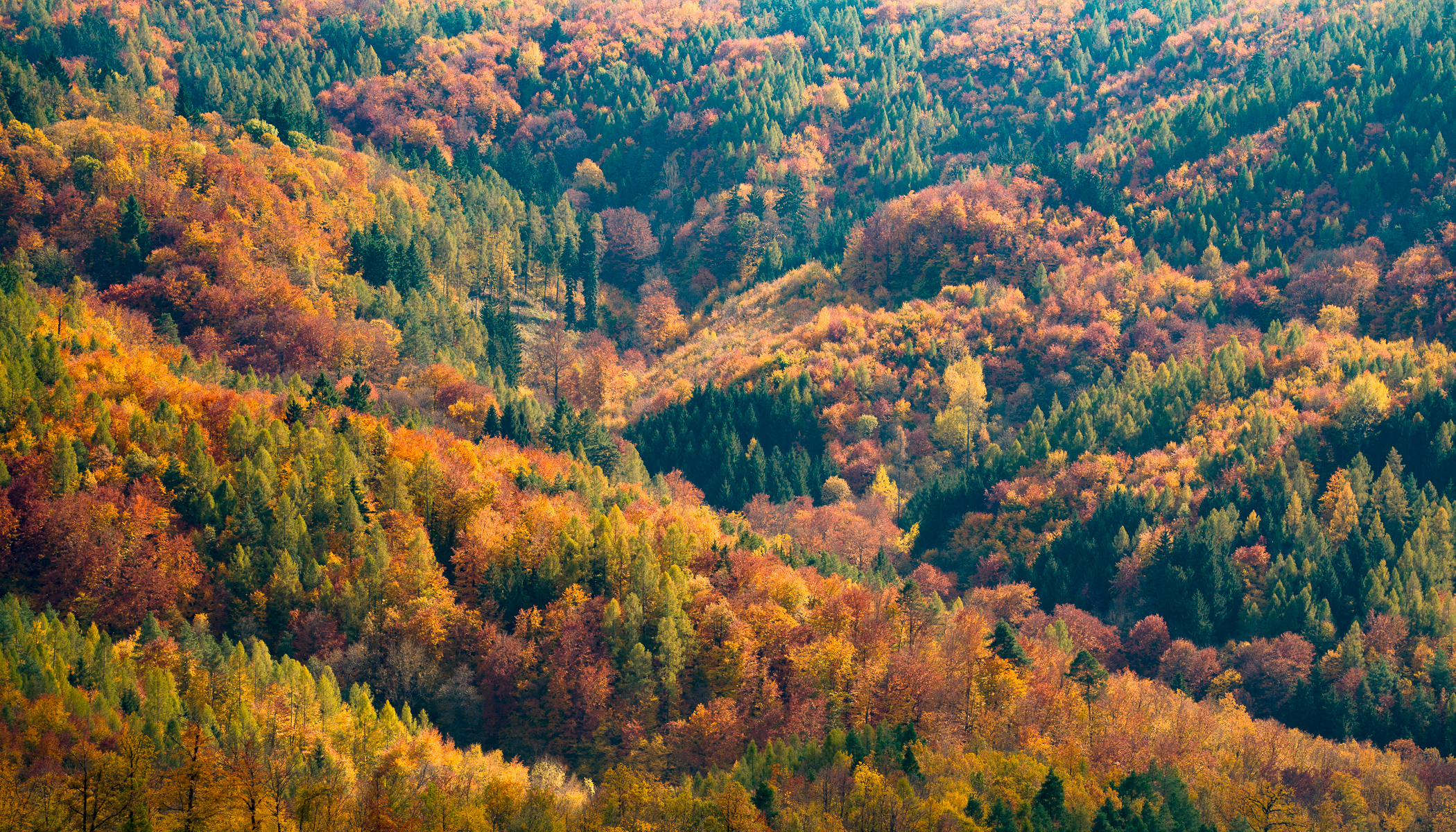
Fall is a favorite season for many photographers. Fall colors are incredibly photogenic, but they’re not the only reason to head out with your camera this time of year. Read on to discover what awaits you outdoors and how to make the most of the season’s unique opportunities.
In this article, we discuss:
- The best subjects for autumn landscapes
- Why fall is such a great season for photography
- How to use the fog, shorter days, and fall colors to your advantage
- Where to find interesting compositions and light
Fall is a time when the landscape changes dramatically. Depending on whether you go by the astronomical or meteorological definition, it can stretch from early September, when it’s still pleasantly warm, to December 21, with snow and freezing temperatures. In this article, we focus on the part of the season that everyone imagines when they hear the word “fall.”
Colorful nature
Changing colors are probably the first thing that comes to mind when you think of fall.
Views from above the forest are breathtaking, where clusters of trees of different hues alternate. The best destinations for photographers are hills with scenic views of the countryside or lookout towers.
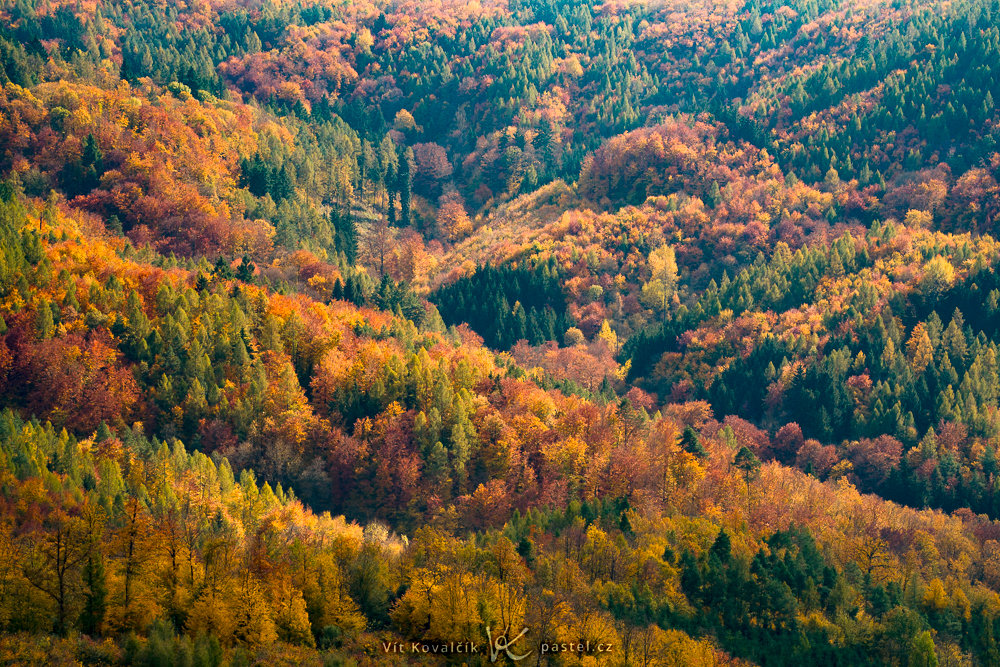
Sony A7R V, Tamron 28-200/2.8-5.6, 1/80s, f/10, ISO 100, focal length 114mm
You can also find beautiful scenes deeper in the forest. It might be a clearing, a small cottage, or a view of the distant hillside. Even the path you’re walking along can be a great compositional element, especially if it forms a leading line through the frame. Bonus points if it winds into an S-shape or has a few curves. A telephoto lens helps compress the scene and bring the individual sections of the path closer together, avoiding a huge curve in the foreground and a barely visible one in the distance.

Canon R5, Canon 70-300/4-5.6L, 0.4s, f/13, ISO 100, focal length 108mm
And it’s not just trees that change color. For example, in South Moravia, vineyards also turn shades of red and gold. Their tidy rows contrast beautifully with the irregular shapes of the surrounding landscape, and look great both from above and up close.

Canon R5, Sigma 150-600/5-6.3, 1/25s, f/11, ISO 100, focal length 388mm
Landscapes with buildings
Isolated buildings add character to natural scenes. They can be small chapels, hunting lodges, or forest cottages—or larger landmarks like castles or chateaus.
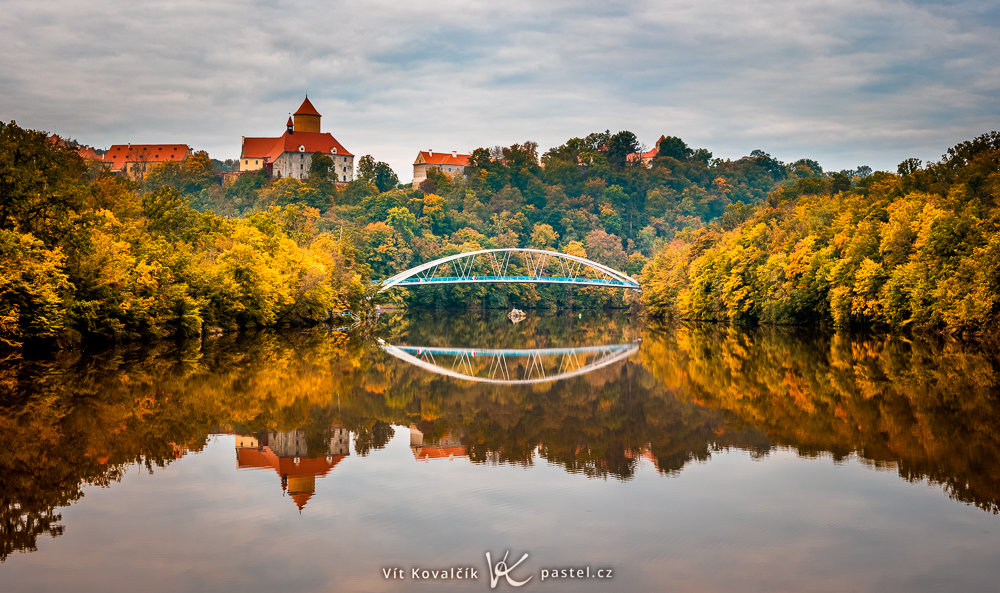
Canon R5, Canon 70-300/4-5.6L, 1/20s, f/10, ISO 100, focal length 81mm

Canon R5, Canon 16-35/2.8 III, 1/8s, f/8, ISO 100, focal length 29mm
Fields and farmland
In autumn, fields appear in different stages of plowing or sowing. Unlike in summer, you’re not limited by tall grain or corn, giving you many more options.
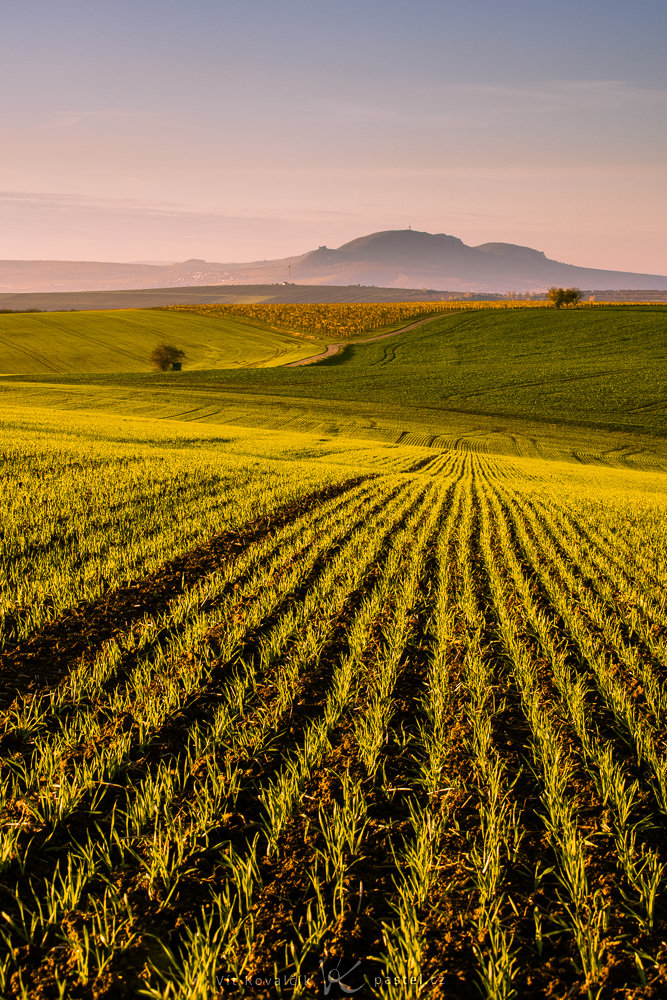
Canon R5, Canon 70-300/4-5.6L, 1/30s, f/16, ISO 100, focal length 78mm
Lone trees or small clusters of trees complement the scene nicely, casting long shadows across freshly plowed fields in the morning or evening light.
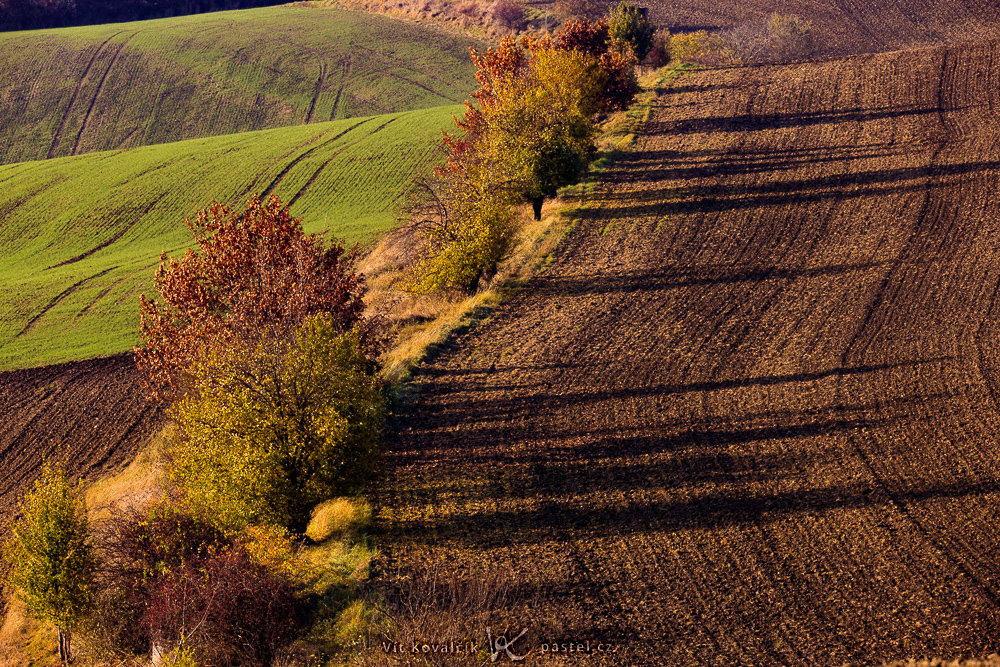
Canon R5, Sigma 150-600/5-6.3, 1/80s, f/13, ISO 400, focal length 283mm
Shorter days
While later sunrises and early sunsets might be a nuisance in everyday life, they’re a real advantage for photographers. The golden hour is ideal for photography, and unlike in summer, you don’t have to wake up before dawn or stay out late to catch it. For example, in Europe, the week before we switch to daylight savings time is perfect, with sunrise around 7:30 a.m. It’s similar to the end of the year, but it’s usually colder and nature isn’t as photogenic then.
Similarly, in summer, sunset is often so late you don’t get home until very late. In the fall, you can capture beautiful evening light much more easily, which makes it easier to plan your shoots and still have time to relax afterward. In Europe, it’s best to take advantage of the weeks immediately after daylight savings time when the sun sets around 4:30 p.m.
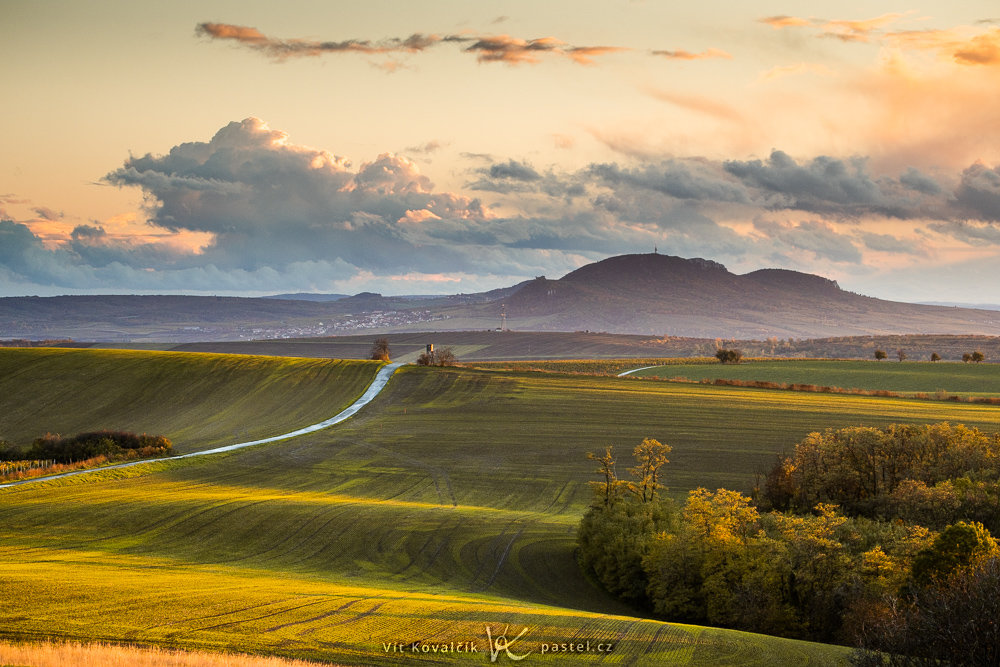
Canon R5, Canon 70-300/4-5.6L, 1/80s, f/8, ISO 400, focal length 120mm
Fog
Many people complain about foggy weather, but for photographers, it’s a good thing.
There are different ways to use fog. From a window, it might look dull if you can’t even see the house across the street. But from a higher viewpoint, like a hill or lookout tower, that same fog can turn into waves of fog rolling in beneath you.
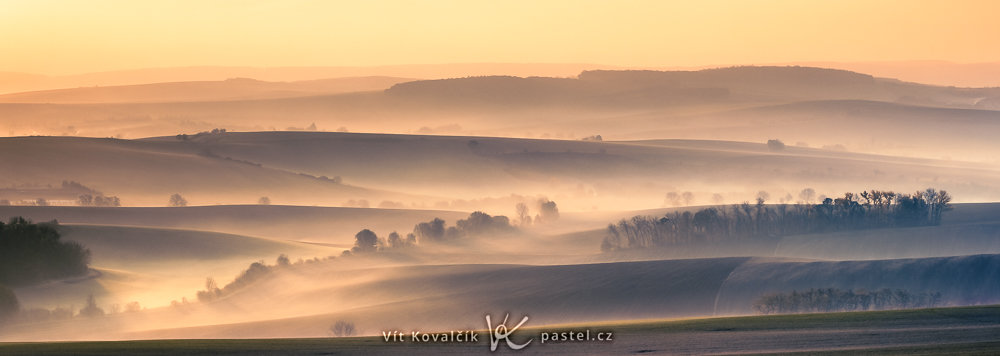
Canon R5, Canon 70-300/4-5.6L, 1/30s, f/14, ISO 100, focal length 124mm
Closer shots can be just as magical. Paths lined with trees fading into the mist have a special mood of their own.
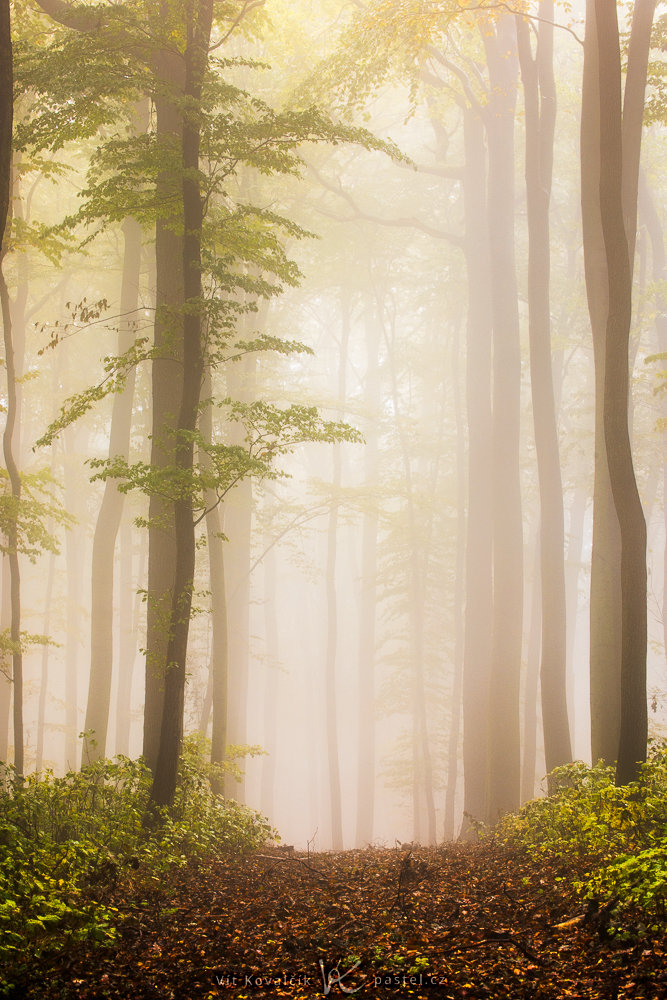
Canon R5, Canon 70-300/4-5.6L, 1s, f/14, ISO 100, focal length 93mm
It’s also worth looking for sunbeams made visible by thinning fog. This effect appears when the fog begins to lift.

Canon R5, Canon 70-300/4-5.6L, 1/30s, f/5, ISO 100, focal length 182mm
And I couldn’t resist including an example of an urban landscape, because familiar scenes take on a whole new look in foggy conditions. When was the last time you saw Brno’s Špilberk Castle hidden in mist? And as a bonus, there are usually fewer tourists around this time of year.

Canon R5, Canon 16-35/2.8 III, 1/80s, f/8, ISO 100, focal length 16mm
Car light trails
Early dusk has another big advantage—there’s still plenty of traffic. You can use this to capture beautiful light trails, both in the countryside and in the city.
In the countryside, look for major intersections or looping highway ramps.
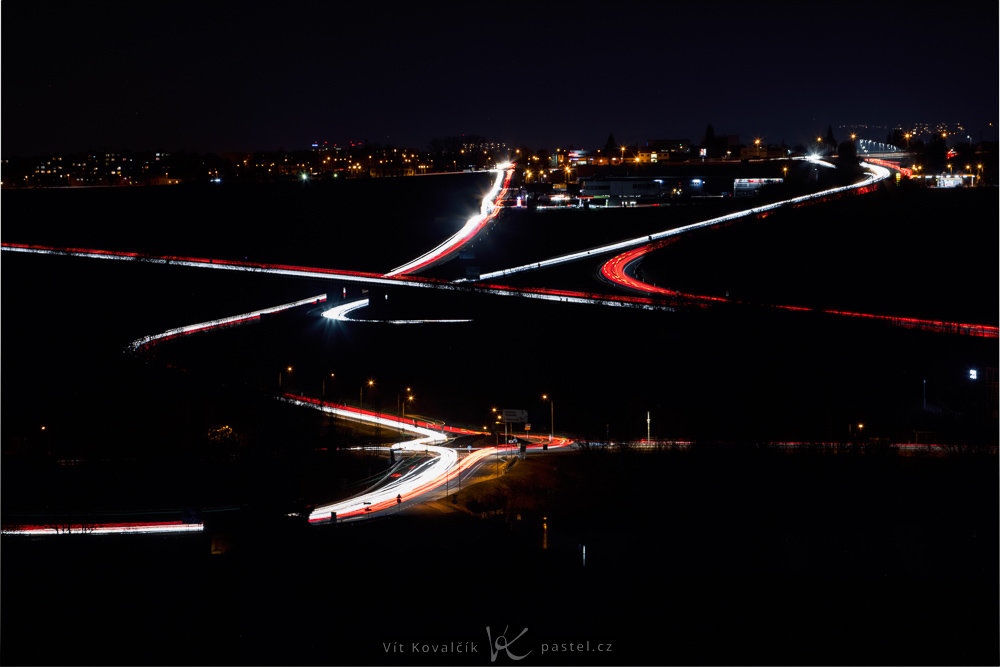
Canon R5, Canon 70-300/4-5.6L, 13s, f/14, ISO 100, focal length 176mm
Or, focus on the details by finding a forest curve where cars pass through. In later fall, when the trees are bare, you can find more open spots with a clear view.
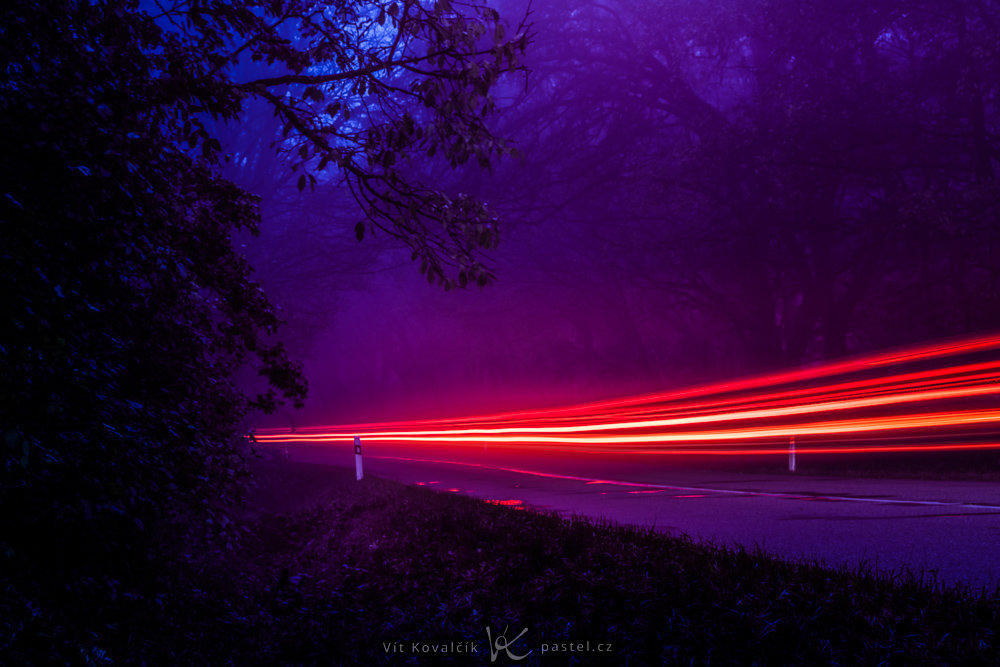
Canon R5, Canon 70-300/4-5.6L, 30s, f/11, ISO 100, focal length 70mm
In the city, streetlights and lit-up houses can be included to add even more color and atmosphere to the scene.

Canon R5, Canon 24-70/2.8 II, 15s, f/11, ISO 100, focal length 61mm
New perspectives
If you’ve only thought of fall as the season of colorful leaves, hopefully this article has inspired you to look at it differently. You might start to see potential where you hadn’t noticed it before. Maybe a month from now, you can photograph the same place in a completely new way. Good luck, and here’s to bringing home some fresh and unexpected shots.
FAQs
What should I use for shooting fall landscapes? A basic zoom lens, a telephoto lens for compression, and a tripod for long exposures, especially in low light or fog.
How can I photograph the fog? Head to a higher elevation, ideally right after sunrise. Use manual mode and look for contrasting subjects that are partially hidden by the fog.
How can I capture car light trails? Use a tripod, low ISO, and a long shutter speed of 10–30s. Let the cars enter the frame and watch their lights turn into colorful lines.
Where can I find the best locations for autumn photography? Hills overlooking valleys, vineyards, solitary trees in fields, lookout towers, and winding roads. All of these come to life in autumn.
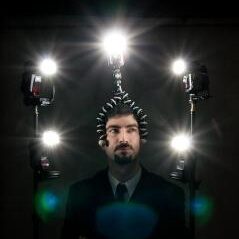
There are no comments yet.